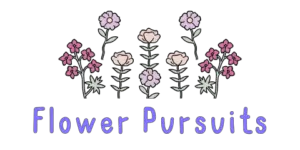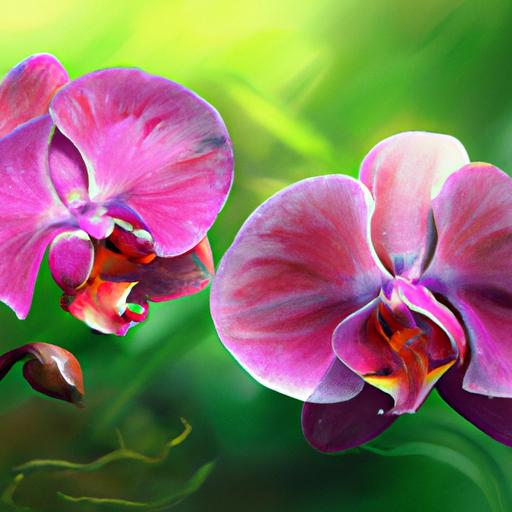Have you ever marveled at the beauty of an orchid blossom? If so, youre not alone in your appreciation of these delicate and unique flowers.
But have you ever wondered how orchids work? In this article, well explore the fascinating inner workings of orchids, from the types of orchids available to the intricacies of their pollination process and fertilization.
Well also look into how orchids reproduce and the creation of seed pods, as well as the reproductive cycle of these amazing flowers.
So, if youre curious about orchids, read on to learn more!
Table of Contents
Short Answer
Orchids are a type of flower that use a process called pollination to reproduce.
Pollination occurs when pollen from the male part of the flower is transferred to the female part of another flower.
This process allows for genetic diversity and helps the orchid to adapt to its environment.
The orchid will then produce a seed that can be used to grow a new orchid plant.
Types of Orchids
Orchids are some of the most diverse and captivating plants in the world and come in a wide variety of shapes, sizes, colors, and fragrances. There are over 25,000 varieties of orchids all around the world, so it can be difficult to categorize them all. Generally, they are divided into three main types: terrestrial, epiphytic, and lithophytic.
Terrestrial orchids are found growing in the ground.
They are typically found in moist, shady environments and require lots of water and nutrients to flourish.
Epiphytic orchids are the most common type and are found living on trees and other plants.
They dont require soil to grow and instead get their nutrients from the air and rainwater.
Finally, lithophytic orchids are found growing on rocks and other structures.
These orchids have adapted to survive in the harshest of environments and are usually found in tropical climates.
No matter what type of orchid you have, they all share the same basic process of pollination and fertilization.
In order for an orchid to reproduce, it must be pollinated by an outside source.
This is usually done by insects, such as bees, flies, and butterflies, but can also be done by other animals or even by the wind.
Once the pollen from the pollinator is transferred to the stigma of the orchid, the ovaries of the plant are fertilized, resulting in a seed pod.
From there, the orchid can produce new flowers and even new plants.
Pollination Process

The pollination process of orchids is one of the most interesting aspects of these plants.
Orchids are capable of both insect pollination and self-pollination, but they have adapted to rely mainly on insect pollination.
This is done by attracting certain pollinating insects with their brightly colored petals and strong fragrances.
Once the pollinating insect lands on the orchid flower, the pollen from the insect is transferred to the stigma of the orchid.
This process is known as cross-pollination, and it is essential for the fertilization of the ovaries of the orchid.
In some cases, the orchid will even produce a seed pod as a result of this process.
Insect pollination is not the only way that orchids can reproduce, however.
Self-pollination is also possible, as the orchids stamens and pistils often overlap in such a way that the pollen from the stamen directly contacts the stigma of the pistil.
This process is known as self-fertilization, and it is significantly less efficient than insect pollination.
Self-fertilization often results in fewer flowers and fewer plants than insect pollination.
In order for an orchid to survive and reproduce, it is essential that both insect pollination and self-pollination are successful.
Without either of these processes, the orchid will not be able to produce the seeds and flowers necessary for its continued survival.
The fascinating pollination process of orchids is one of the many reasons why these plants are so beloved.
With their bright colors and strong fragrances, they are able to attract the pollinating insects necessary for their reproduction.
But even without these insects, orchids are still capable of self-pollination, allowing them to reproduce even in the absence of their insect friends.
Attracting Pollinators
The orchids ability to attract pollinators is a fascinating process that helps them to reproduce and create new plants.
To do this, they have adapted to use their brightly colored petals and strong fragrances to attract specific pollinating insects.
The petals are usually brightly colored in shades of pink, purple, yellow, and white, and the unique shape of the petals helps to guide the pollinators to the center of the flower where the stamen and pistil are located.
The strong fragrances emitted by the orchid act as an additional attractant to the pollinators.
These fragrances can range from sweet and floral to musky and earthy, depending on the species.
The combination of these two methods ensures that the orchid will be able to successfully attract the right insects to pollinate it.
Once the pollinators are attracted, the pollen from the insect is transferred to the stigma of the orchid, fertilizing the ovaries of the plant and resulting in a seed pod.
From there, the orchid can produce new flowers and even new plants.
Self-Pollination

Orchids are capable of self-pollination, meaning that they can reproduce without the help of insects.
Self-pollination occurs when the flowers pollen is transferred to its own stigma.
This process is most common in orchids that are grown in the home, as the lack of pollinating insects means that they must rely on their own resources.
Self-pollination is made possible by the orchids long, thin column, which is the part of the flower that contains both the male and female parts.
When the flowers anthers (the male part) release their pollen onto the stigma (the female part), the ovaries of the plant are then fertilized, resulting in a seed pod.
With self-pollination, the orchid is able to create new flowers and plants without the help of pollinating insects.
Fertilization
When it comes to fertilization, orchids have a unique system.
They rely on a combination of insect pollination and self-pollination to reproduce.
To facilitate this, orchids have adapted to attract pollinating insects with their brightly colored petals and strong fragrances.
Once the pollen from the insect is transferred to the stigma of the orchid, the ovaries of the plant are fertilized.
This results in the creation of a seed pod, which can then be used to produce new flowers and even new plants.
Orchid flowers are highly specialized, and many have unique features to assist in pollination.
For example, some orchids produce nectar in the center of the flower, which attracts insect pollinators.
Other orchids have a special structure called a rostellum, which prevents self-pollination by blocking the pollen from reaching the stigma.
When an insect pollinates an orchid flower, the pollen is transferred to the stigma.
This triggers a process called pollen tube growth, where a tube of cells grows from the pollen grain and down into the ovary of the flower.
As the pollen tube enters the ovary, it releases its contents and fertilizes the ovules, or eggs, within.
This results in the formation of seeds, which can then be used to grow new orchids.
The process of fertilization is incredibly complex, but it is essential for the survival of the orchid species.
Without it, orchids would not be able to reproduce and eventually would become extinct.
Fortunately, this process is highly efficient and has allowed orchids to thrive and spread across the globe.
Seed Pods

Once the pollen from an insect’s visit is transferred to the stigma of an orchid, the ovaries of the plant are fertilized and a seed pod is produced.
A seed pod is an elongated, seed-containing capsule that develops from the ovary of the orchid flower.
It is the part of the orchid flower that houses the seeds.
The seed pod is an important part of the orchid’s reproduction cycle as it is responsible for dispersing the seeds in order for the orchid to spread and reproduce.
The seed pod will eventually dry up and split open, releasing the seeds which will be carried away by the wind or by animals.
These seeds can then start the reproduction cycle all over again.
The seed pod is an essential component of the orchid’s reproduction process and its production is the result of a successful pollination.
The Reproductive Cycle
Orchids are a fascinating family of plants that have a unique and complex reproductive cycle.
To understand this process, it is important to first understand the structure of the orchid flower.
Orchids have three petals and three sepals, with the petals being the most brightly colored and the most attractive to potential pollinators.
The stigma, which is the receptive part of the flower, is located at the center of the flower.
The anthers, which produce the pollen, are located at the base of the petals.
The reproductive cycle of orchids is complex and involves a combination of insect pollination and self-pollination.
To begin the cycle, the orchid attracts a pollinator with its bright petals and strong fragrance.
When the insect lands on the flower, the pollen from the anthers is transferred to the stigma of the flower.
This is known as cross-pollination.
Once the pollen is transferred, the ovaries of the flower are then fertilized, resulting in the production of a seed pod.
In some species, the orchids are able to reproduce asexually, meaning they can self-pollinate without the need for a pollinator.
This is known as self-pollination, and it occurs when the anthers of the flower touch the stigma, transferring the pollen directly to the ovary.
Once the ovaries of the flower are fertilized, the seed pod forms, which is then capable of producing new flowers and even new plants.
The cycle then continues, with the newly formed flowers attracting new pollinators and potentially self-pollinating as well.
In this way, the cycle is constantly repeated, ensuring the survival of the orchid species.
Final Thoughts
Orchids are truly remarkable plants, with a complex and fascinating reproductive cycle.
By understanding the different types of orchids, the pollination process, and how they attract pollinators, we can better appreciate the beauty of these plants.
With this newfound knowledge, go out and explore the many varieties of orchids and see how they interact with the environment.
You never know what kind of interesting discovery you may find!

